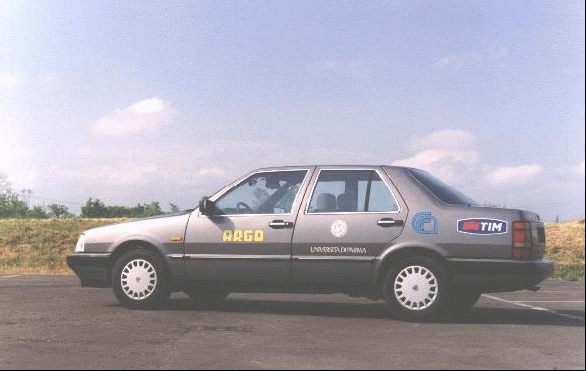The Input SystemOnly passive sensors (cameras) are used on ARGO to sense the surrounding environment, since they offer the possibility to acquire data in a non-invasive way, namely without altering the environment. Because of the large number of vehicles that could be moving simultaneously, this is a prominent advantage with respect to invasive ways of perceiving the environment, which could lead to an unacceptable pollution of the environment.
The vision systemThe ARGO vehicle is equipped with a stereoscopic vision system (figure 1) consisting of two synchronized cameras able to acquire pairs of grey level images. The installed devices are small (3.2cm X 3.2cm) low cost cameras featuring a 6.0 mm focal length and a 360 lines resolution which can receive the synchronism from an external signal.The cameras lie inside the car at the top corners of the windscreen, so that the longitudinal distance between the two cameras is maximum. The optical axes are parallel and, in order to handle also non flat roads, part of the scene over the horizon is captured, even if the framing of a portion of the sky can be critical for the image brightness: in case of high contrast the sensor may acquire oversaturated images.
The acquisition systemImages are acquired by a PCI Matrox board, which is able to grab three 768 X 288 pixel images simultaneously. The images are directly stored into the main memory of the host computer thanks to the use of DMA. The acquisition can be performed in real time, at a 25Hz rate in case of full frames or at a 50Hz rate in case of single field acquisition. |


